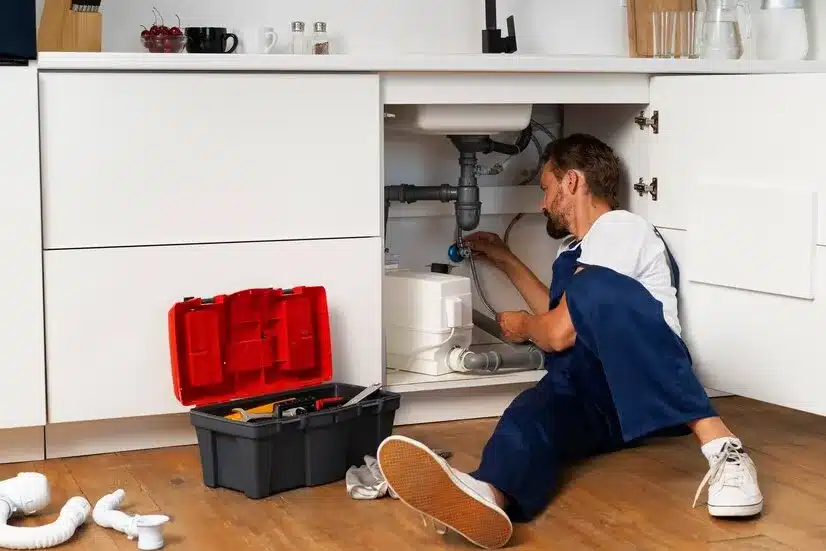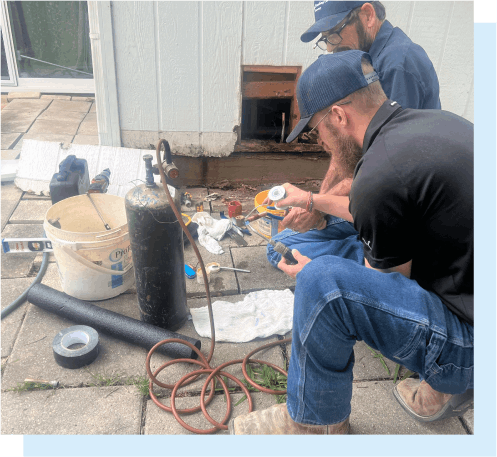
Water leaks can be silent threats that sneak up, causing significant damage if undetected. From devastating floods within your home to subtle leaks that escalate utility bills, the risks of undetected water leakage are numerous and potentially costly. Fortunately, the advent of leak prevention systems has revolutionized how homeowners safeguard their properties against such risks. These systems constitute an essential part of modern residential plumbing, actively preventing water waste and damage by detecting and stopping leaks before they lead to disaster.
In this article, we explore the inner workings, critical components, and undeniable benefits of leak prevention systems, providing you with the knowledge needed to understand why integrating these systems into your home is a wise choice for both safety and sustainability.
Components of a Leak Prevention System
Leak prevention systems are composed of several key components that work together to protect your home from water damage. The primary elements include sensors, a central control unit, and shut-off valves.
Sensors are placed at strategic locations prone to water leaks, such as under sinks, near water heaters, in basements, and around washing machines. These sensors continuously monitor the presence of unwanted water. When water is detected where it shouldn’t be, the sensor sends an immediate alert to the central control unit.
The central control unit acts as the brain of the system. It receives signals from the sensors and processes the information to determine the appropriate response. If a leak is confirmed, the control unit triggers the next crucial component—the shut-off valve.
Shut-off valves are installed directly on your home’s main water supply line. Upon receiving a signal from the control unit that a leak is detected, these valves automatically close, cutting off the water flow and preventing further water from feeding into the leak source. This rapid response is crucial in minimizing damage and conserving water.
How Leak Detection Sensors Work
Leak detection sensors play a crucial role in identifying the presence of water where it shouldn’t be. These devices use technology such as moisture detection or flow monitoring to identify leaks. There are primarily two types of sensors used in residential settings:
1. Moisture sensors detect the presence of water based on conductivity. When water completes the circuit between two electrode probes on the sensor, it sends an alert. These are ideal for installation in areas where leaks are likely to pool water.
2. Flow sensors monitor the flow of water through your pipes and report unusual activity, such as a significant continuous flow, which could indicate a burst pipe. These sensors provide a comprehensive approach by monitoring the entire water system rather than specific areas.
Understanding the functionality of these sensors helps in strategically placing them around the home for maximum protection and efficiency.
Benefits of Installing a Leak Prevention System
Installing a leak prevention system in your home offers numerous advantages beyond simple leak detection:
Water Conservation: By immediately detecting and stopping leaks, these systems play a significant role in preventing water wastage. This conservation is not only beneficial for the environment but also reflects positively on your water bills.
Damage Prevention: Water damage from leaks can lead to costly repairs in home structures, furnishings, and foundational elements. Leak prevention systems mitigate these risks by quickly addressing leaks before they escalate into larger problems.
Peace of Mind: For homeowners, especially those who travel frequently or own multiple properties, these systems provide reassurance. Knowing that their property is safeguarded against water damage in their absence is invaluable.
Insurance Benefits: Some insurance companies offer reduced premiums for homes equipped with leak prevention systems. This reduction is due to the decreased risk of water damage claims, which can be extensive and costly.
Installation and Maintenance
The effectiveness of a leak prevention system significantly depends on proper installation and maintenance. Here’s a closer look at these aspects:
Professional Installation: It’s highly recommended to have your leak prevention system installed by a professional. Experts from services like George Plumbing Co., Inc. ensure that sensors and shut-off valves are correctly placed and fully operational. Professional installation guarantees that the system’s components communicate effectively, providing maximum protection against leaks.
Routine Maintenance: Regular maintenance is crucial to keep the leak prevention system functioning reliably. This involves testing the sensors and shut-off valves to ensure they react appropriately to leak simulations. Batteries in wireless sensor models need to be checked and replaced periodically to keep the system active at all times. Additionally, it’s good practice to inspect the areas around sensors for dust, debris, or any obstructions that might interfere with their operation.
To maintain optimum functionality, consider scheduling annual maintenance checks with a certified professional who can provide expert care and advice.
Innovations in Leak Prevention Technology
As technology advances, so do the capabilities of leak prevention systems. Recent innovations in this field include the integration of smart home technology, which allows homeowners to monitor their systems remotely via smartphone apps. These smart systems can provide real-time alerts directly to your phone, tablet, or computer, giving you the ability to respond quickly, even when you’re away from home.
Additionally, some advanced models incorporate machine learning algorithms that learn the typical water usage patterns of a household. These systems can more accurately identify anomalies in water flow, improving the precision of leak detection.
These technological advancements enhance the functionality of traditional leak prevention systems, offering homeowners more sophisticated solutions to protect their property from water damage effectively. As we continue to embrace smart home technologies, the integration of leak detection and prevention systems becomes a seamless and highly beneficial addition to residential safety and efficiency.
Safeguard Your Home with Advanced Leak Prevention
Incorporating a leak prevention system into your home is a proactive step towards ensuring long-term safety and efficiency. These systems not only protect your property from potentially severe water damage but also promote conservation of water resources, powering a sustainable future. With the evolving landscape of smart home technologies, managing home safety has never been more straightforward and accessible.
If you’re considering enhancing your home’s safety measures with the latest in leak prevention technology, explore the expert services at George Plumbing Co., Inc. Our licensed plumber in San Antonio is equipped to provide top-tier installation, maintenance, and advice, ensuring that your home remains secure and dry. Don’t wait for the first sign of a leak; take preventative action today. Contact us at George Plumbing Co., Inc., to discuss your options and secure your home against leaks!




